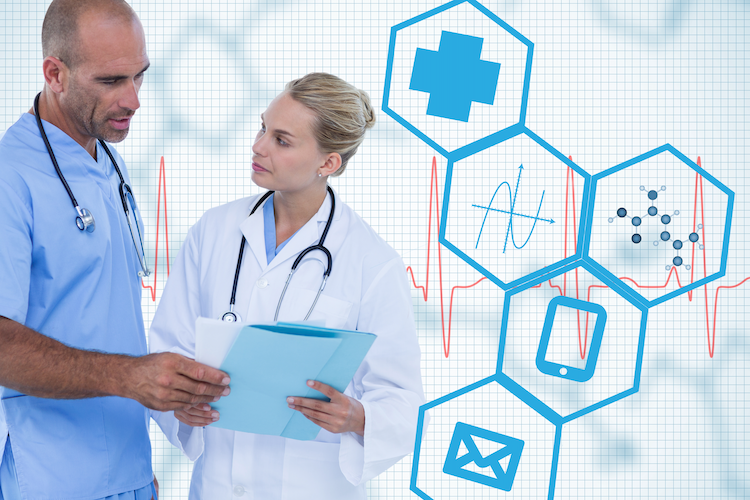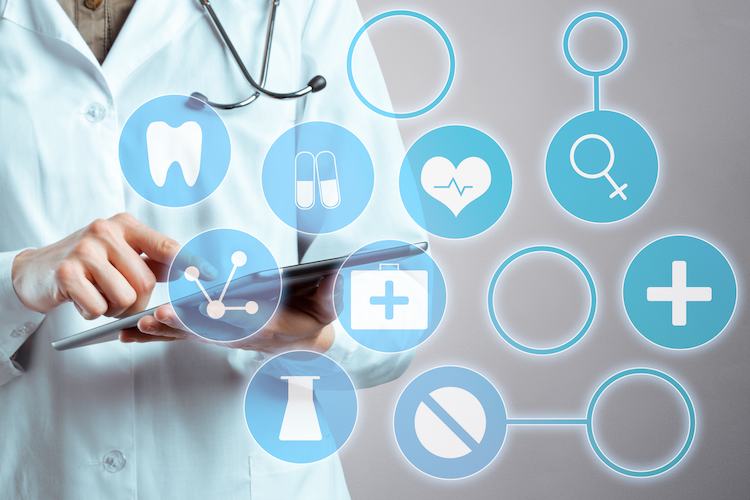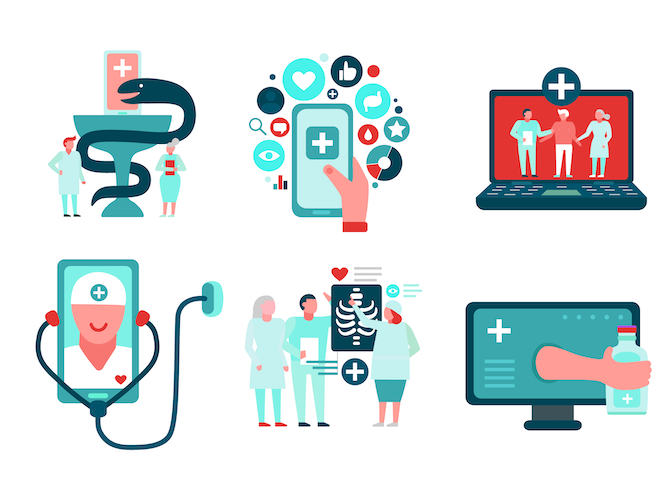HL7 integration isn’t just changing the game; it’s redefining the very fabric of healthcare. This powerful synergy between cutting-edge technology and patient-centric healthcare is doing more than just streamlining data exchange—creating a seamless continuum of care that was once thought impossible. In this rapidly evolving landscape, HL7 integration stands as a beacon of progress, ensuring that patient care is not just enhanced but transformed, setting a new standard for what is achievable in healthcare.
But let’s take a moment to consider the daily reality for many healthcare providers. Picture this: they’re navigating a maze of disconnected healthcare solutions, each speaking its own dialect in a Tower of Babel scenario. It’s like trying to solve a jigsaw puzzle when each piece comes from a different box. Without a common language or a unified interoperability interface—such as the universally acknowledged HL7 standard—these providers face significant obstacles. The lack of connectivity means crucial patient information might be just out of reach, hidden behind the walls of incompatible systems. Frustrating, right?
This scenario isn’t just inconvenient; it’s a barrier to providing the highest standard of care. When healthcare solutions don’t seamlessly connect, it’s not just the efficiency that suffers—patient outcomes are directly impacted, too. Imagine the potential pitfalls: critical data might slip through the cracks, diagnoses could be delayed, and treatment plans might not be as precise as they could be. It’s a high-stakes environment where every piece of data matters, and every second counts. The quest for interoperability isn’t just about smoothing out operational wrinkles; it’s about safeguarding the well-being of patients at every turn.
In this context, HL7 integration emerges not just as an option but as an imperative—a bridge over troubled waters, if you will. It promises a future where healthcare systems communicate as effortlessly as members of a well-rehearsed orchestra, each note perfectly in tune, contributing to a symphony of streamlined operations and superior patient care. So, as we delve deeper into the world of HL7 integration, let’s keep in mind the profound impact it has not just on the backend processes but on the very heart of healthcare—the well-being and outcomes of patients worldwide.
Top Takeaways:
- Navigating the Digital Transformation in Healthcare: Imagine a world where every piece of medical information speaks the same language, effortlessly bridging gaps between systems. This is not just a dream; it’s a reality crafted by the strategic implementation of HL7 across hospitals. By transcending traditional barriers of communication, we’re not just integrating systems—we’re redefining patient care and setting new benchmarks for efficiency in healthcare. It’s a holistic approach that goes beyond mere HL7 hospital integration, spotlighting the transformative power of unified digital health ecosystems.
- Overcoming Interoperability Hurdles with HL7 Software: The paramount takeaway from navigating the complexities of implementing HL7 integration lies in understanding the critical role of HL7 integration software. This software becomes the linchpin in addressing variances in implementation standards, mitigating risks involved in EHR migration, and ensuring reliability in data semantics. It’s not just about overcoming obstacles; it’s about leveraging technology to streamline healthcare communication and enhance patient care. Therefore, choosing robust, flexible HL7 integration software is crucial for healthcare organizations aiming to transform these challenges into opportunities for growth and improvement.
- The Harmonious Symphony of Seamless Data Integration: The landscape of HL7 interface integration emphasizes flexibility and scalability in healthcare systems. HL7 integration engines provide efficient solutions for integrating multiple systems. Popular options like Iguana, Definitive Healthcare, NexHealth, Redox, and Qvera Interface Engine (QIE) offer unique features to meet various needs. Choosing the right HL7 integration engine is crucial for seamless interoperability and improved healthcare delivery.
Table of Contents:
- What is HL7 Integration?
- Why Integrate HL7 Standards in Healthcare?
- Benefits of HL7 Integration
- Challenges of Implementing HL7 Integration
- HL7 Integration via APIs
- Steps to HL7 Integration
- How Topflight Can Help
What is HL7 Integration?
HL7, or Health Level Seven, refers to a set of international standards for the transfer of clinical and administrative data between software applications used by various healthcare providers. Now, let’s delve into what HL7 Integration is all about.
Introduction to HL7 Integration
As the digital revolution continues to transform healthcare, one term you might come across frequently is “HL7 Integration”. But what exactly does it mean, and why is it so crucial in the world of healthcare IT?
HL7 Integration is the process of connecting and exchanging medical information between different healthcare systems and applications. This integration allows for seamless communication and interoperability between various healthcare IT systems, enabling efficient and error-free sharing of clinical data. In other words, HL7 integrations are the glue that holds disparate healthcare systems together, ensuring they can talk to each other in a language they all understand.
Think of it as interpreters at an international summit. Just as these interpreters ensure clear communication between delegates speaking different languages, such integrations ensure that different healthcare systems – each with their own ‘language’ or data format – can exchange information effortlessly.
Understanding HL7 Standards
To grasp the concept of HL7 integration better, we need to delve into HL7 standards. The Health Level Seven International organization created these standards as a set of rules and guidelines. They define the structure, format, and semantics of healthcare data, ensuring consistency and compatibility across different systems.
The most widely adopted HL7 standards include:
- HL7 V2
- HL7 V3 (CDA/CCD)
- HL7 FHIR
Each standard serves specific purposes and supports different types of healthcare data transactions.
HL7 V2, for instance, is the most popular among healthcare organizations due to its simplicity and flexibility. On the other hand, HL7 FHIR is gaining ground due to its rich integration capabilities and use of modern web technologies.
Understanding HL7 standards is critical to grasp how HL7 integrations work. It’s about ensuring that every healthcare application, irrespective of its manufacturer or the technology it uses, can ‘speak’ and ‘understand’ the same language for the ultimate goal – enhanced patient care.
Related: Building a Health App Using SMART on FHIR
Stay tuned as we delve deeper into why integrating HL7 standards in healthcare is essential, the benefits it brings, the challenges to overcome, and how Topflight’s HL7 integration expertise can guide you through this journey.
Why Integrate HL7 Standards in Healthcare?
The integration of HL7 standards into healthcare systems is more than just a trend; it’s a necessity for efficient and effective patient care.
The Need for Universal Communication Language in Healthcare
In the intricate ecosystem of healthcare, numerous applications and systems exist (e.g., EHRs/EMRs and clinical decision support platforms), each with its unique communication language. This diversity, while reflecting the versatility of healthcare solutions, can often lead to communication barriers and inefficiencies.
This is where the integration HL7 comes into play. It acts as a universal translator, bridging the gap between different systems and facilitating seamless communication. Here’s why this is crucial:
- Efficient Data Exchange: With a common framework for data exchange, medical practices, organizations, and even patients can connect, share, and access information effectively and swiftly.
- Improved Clinical Data Content: HL7 integration enhances the quality of clinical data by providing a structured format, enabling precise interpretation and exchange of medical information.
- Reduced Errors: With data exchange automation, HL7 hospital integration minimizes the need for manual data entry, thereby reducing the potential for errors and improving efficiency.
Users of HL7 Integration
The advantages of the Health Level Seven interoperability standard are leveraged by various stakeholders in the healthcare industry, including:
- Clinical Interface Specialists: These specialists ensure the smooth flow of clinical data between healthcare providers and applications/systems. HL7 integration helps them streamline these data exchange processes and ensure compatibility across all procedures.
- Government or Regulatory Authorities: For these authorities, interconnecting health apps simplifies the process of sharing healthcare data, making compliance with regulations more straightforward and efficient.
- Medical Informaticists: These users are interested in healthcare informatics. HL7 integration enables them to access and analyze comprehensive, standardized medical data for research and analysis purposes.
- Health App Developers: Another group that benefits from implementing this messaging protocol are health app developers. These tech-savvy professionals create brand-new applications that need to sync data with legacy medical systems. They may also integrate various existing solutions to enable smooth PHI flow, making HL7 integration a key tool in their arsenal.
Benefits of HL7 Integration
Implementing an HL7 integration solution can unlock a host of benefits for healthcare organizations and clinical executives. Let’s delve into the advantages that this universal communication language brings to the table.
HL7 integration is more than just a tool for achieving seamless interoperability and efficient data exchange in healthcare. It’s a strategic asset that can transform your organization’s operational efficiency, patient care, and bottom line. Here are some of the key benefits.
Enhanced Communication
HL7 integration promotes standardized communication between different healthcare applications and systems. This ensures accurate transmission and interpretation of data, fostering improved collaboration among healthcare providers.
Improved Efficiency
By automating various processes and streamlining workflows, implementing Health Level Seven messaging protocol enhances operational efficiency. It reduces manual errors and provides faster access to critical patient information.
Cost Savings
An HL7 hospital integration solution can lead to significant cost reductions. It eliminates the need for manual data entry, minimizing the risk of data duplication or errors. This saves time, reduces costs associated with manual labor, and prevents potential medical mistakes.
Related: Healthcare App Development Cost Guide
Superior Patient Care
With comprehensive and up-to-date patient information at their fingertips, doctors can make informed decisions and provide personalized care. The Health Level Seven interoperability protocol plays a crucial role in enhancing patient outcomes.
Interoperability
HL7 integration fosters interoperability by enabling different healthcare systems and applications to seamlessly exchange data. This smooth data exchange allows for better coordination of care and improved continuity.
Related: Interoperability in EHR
Scalability
HL7 integration solutions are designed with the future in mind. They can easily scale up or down to handle increasing data volumes and accommodate the integration of new applications or systems as your healthcare organization grows.
Regulatory Compliance
Helps you stay on the right side of the law. It ensures secure and standardized data exchange, helping healthcare organizations comply with regulatory requirements such as HIPAA.
Related: HIPAA Compliant App Development Guide
Data Analytics and Reporting
HL7 integration enables healthcare organizations to leverage data analytics tools for valuable insights. It aids in generating meaningful reports, helping organizations identify trends, monitor performance, and make data-driven decisions.
In the next section, we’ll discuss the challenges you might face when implementing an HL7 integration solution and how you can overcome them.
Challenges of Implementing HL7 Integration
While the advantages of implementing a health level 7 integration are numerous, it’s important to acknowledge that the journey is not without its obstacles.
Variance in Implementation Standards
The first major hurdle arises from the variance in the implementation of HL7 standards. Different healthcare systems and applications may interpret the standards differently, leading to inconsistencies in data communication. For example, you might need to convert HL7 structured data into JSON to establish contact with a legacy solution and send PHI from it to a newly built app.
This variance can pose a significant challenge as programmers and system analysts must maintain multiple code bases and integration points, ramping up both the time and cost required for integration.
Risks Involved in EHR Migration
Another significant challenge is the risk associated with migrating electronic health records (EHR) from one system to another. Unplanned or poorly executed EHR migration can result in the loss of legacy data, which is crucial for the continuity of care. To mitigate this risk, healthcare institutions must prioritize the data to be migrated and ensure compatibility and accuracy after the conversion of data into other formats.
Related: How to Integrate a Health App with Epic EHR/EMR
Unreliable Data Semantics
The success of a health level 7 integration largely hinges on accurate interpretation of data semantics to avoid misinterpretation of data values. Inconsistencies in data semantics can lead to miscommunication and errors in healthcare delivery. HL7 integration engines play a crucial role in communicating the right interpretation of data semantics, ensuring accurate and comprehensive data sharing.
Recognizing these challenges is the first step towards overcoming them. With proper planning, expert guidance, and robust integration tools, healthcare organizations can navigate these hurdles and successfully implement interconnected user experiences.
HL7 Integration via APIs
HL7 API integration is a key aspect of healthcare technology, enabling the seamless interoperability of different systems and applications.
Comparison Between Point-to-Point Interface and HL7 Integration Engine
When it comes to HL7 API integration, there are two main methods: point-to-point interfaces and HL7 integration engines. Each has its own strengths and considerations.
A point-to-point interface involves creating a direct connection between two systems. While this approach can be straightforward and effective for simple integrations, it can quickly become complex as the number of systems increases. This is because each system requires its own unique interface, leading potentially to an unwieldy web of connections that can be difficult to manage and maintain.
On the other hand, an HL7 integration engine acts as a central hub, connecting multiple systems through a single point. This approach simplifies the integration process and reduces the maintenance overhead, making it a more scalable solution for larger organizations or more complex integrations.
Popular HL7 Integration Engines
There are several popular HL7 integration engines on the market today, each offering its own unique features and benefits:
- Iguana is known for its robust functionality and user-friendly interface, making it a popular choice for many healthcare organizations.
- Definitive Healthcare provides comprehensive healthcare data solutions, including an advanced HL7 integration engine.
- NexHealth offers a patient experience management platform that includes Health Level Seven integration capabilities.
- Redox offers a contemporary healthcare integration solution through its cloud-based platform. Our EHR integration specialists regard it as a dependable and effective choice for our partners.
- Qvera Interface Engine (QIE) is another popular choice, and it is known for its powerful performance and flexibility.
Choosing the right HL7 integration engine for your organization depends on your specific needs, including the complexity of your integration, the systems you’re working with, and your budget. It’s crucial to approach the process of implementing an HL7 API integration with a clear understanding of your needs and a well-thought-out integration plan.
Steps to HL7 Integration
HL7 integration is a crucial step in ensuring seamless communication between disparate healthcare systems. It’s the key to unlocking interoperability, data sharing, and enhanced patient care. In this section, we’ll explore the best practices to integrate HL7 and offer some valuable insights from our wealth of experience at Topflight.
HL7 Integration Steps
Integrating HL7 standards successfully requires a comprehensive understanding of both the technical aspects and the specific needs of your healthcare organization.
Step #1. Define Your Integration Goals
Start by identifying your objectives. For example, if you’re integrating a remote patient monitoring app with an existing EHR system like Epic, determine the specific data elements and workflows that need to be integrated.
Also Read: EPIC vs Cerner: Comparison of Healthcare IT Leaders
Step #2. Understand HL7 Standards
Familiarize yourself with different versions of HL7 and their compatibility with your existing systems. Understanding the structure of HL7 messages and the data model is crucial for successful integration.
Step #3. Choose the Right Integration Approach
Evaluate the pros and cons of point-to-point interfaces and HL7 integration engines. For complex integrations or larger organizations, an EHR interoperability engine could offer more scalability and flexibility.
Step #4. Ensure Data Compatibility
Create a comprehensive data mapping plan to ensure seamless data exchange. Address any data format conversions or translations to avoid misinterpretation of data.
Step #5. Implement HL7 Protocols
This step involves coding – implementing HL7 protocols to ensure integrability of disconnected healthcare applications. By writing code that adheres to these protocols, you ensure that your health app can ‘speak’ this language and communicate effectively with other systems.
Step #6. Test Thoroughly
Rigorous testing is essential to detect and resolve any potential issues before full implementation. Test different scenarios, including edge cases, to ensure the reliability of the integration.
Related: EHR Implementation Cost
Implementation Tips
Implementing HL7 integration can be complex, but with the right approach and expertise, it can be a smooth process. Here are some tips based on our HR interoperability expertise at Topflight:
Engage Key Stakeholders
Involve clinicians, IT teams, and end-users throughout the process. Their input can help ensure the integration meets user requirements and expectations.
Plan for Change Management
Health Level Seven integration will likely impact existing workflows. Develop a strategy to manage these changes and provide training and support to facilitate a smooth transition.
Partner with Experts
Consider partnering with an experienced partner like Topflight. Our team has extensive knowledge and experience in HL7 integration, ensuring a seamless and efficient process. By all means, only work with a company that constantly learns and has practice with the latest EHR interoperability standards.
Also Read: A Complete Guide to EHR Implementation
Regular Monitoring and Maintenance
Once implemented, regularly monitor the performance of integrated solutions. Regular updates and maintenance are crucial to accommodate changes in systems, standards, or regulations.
By following these best practices and implementation tips, healthcare organizations can achieve successful interoperability outcomes, enabling efficient data exchange between their healthcare apps and existing systems.
Read also our guide on benefits of integrated healthcare systems
How Topflight Can Help
Navigating the intricacies of HL7 integration can feel like walking a tightrope. One misstep can lead to significant issues, and there’s little margin for error. But what if you had a trusted guide to help you maintain balance and ensure a successful crossing? That’s where Topflight comes in.
Our team at Topflight is steeped in years of hands-on experience in healthcare IT, with a particular emphasis on mastering the art of HL7 integration. We comprehend the ins and outs of HL7 standards, their subtle differences, and how they can be tailored to fit different healthcare systems like a glove. We believe in the power of meticulous planning, rigorous testing, and unwavering support – the holy trinity that forms the bedrock of our approach to how to integrate HL7.
Over the years, we have successfully spearheaded the development of interconnected healthcare apps for a multitude of clients across the healthcare landscape. Here’s a sneak peek into the kind of projects we’ve tackled:
- Integrating an RPM platform with a smart bot: We seamlessly merged a remote patient monitoring platform with a smart bot, facilitating efficient data exchange and enhancing patient care.
- Seamless EHR integration with a patient portal: We integrated a patient portal with EHRs, ensuring secure and smooth data transfer, thereby improving patient engagement and experience.
- Integrating AI health app with major EHRs: Our expertise came to the fore when we integrated an AI-powered health app with leading EHRs like Cerner and Epic, thereby boosting interoperability and operational efficiency.
- Mobile health app integration with EHR systems: We ensured seamless data flow between mobile health apps and EHR systems, enabling real-time access to patient data and enhancing care delivery.
- Integrating telehealth platforms with various EHRs: We successfully integrated telehealth platforms with different EHR systems, promoting remote care and improving patient outcomes.
HL7 integration, in essence, is a prerequisite for any modern healthcare app development project. After all, these apps don’t exist in isolation. They’re integral parts of a larger ecosystem, designed to seamlessly exchange data and actively engage in the clinical workflows managed by various other platforms, services, and applications. This symbiotic relationship ensures that healthcare apps are not just efficient in their own right but also contribute to the broader objective of improving patient care through superior interoperability and data sharing.
Also Read: Healthcare App Development Guide
If you’re looking to develop a digital healthcare solution or integrate existing solutions, consider partnering with Topflight. Our team of EHR Integration experts is ready and eager to guide you through the process, ensuring a successful integration that enhances data exchange, improves patient care, and drives operational efficiency.
FAQ
What is the latest HL7 protocol, and what is the most popular one?
The latest protocol version is HL7 FHIR (Fast Healthcare Interoperability Resources) version 4.0.1, which was released in 2020. FHIR is also currently the most popular protocol due to its ability to leverage modern web-based communication methods, making it easier to implement and use.
Is there an alternative to HL7?
Yes, there are several alternatives, including DICOM (Digital Imaging and Communications in Medicine), which is used for medical imaging data, and CCD (Continuity of Care Document), which is a standard for the exchange of patient summary information. However, Health Level Seven is the most widely used standard due to its comprehensive nature and adaptability to different healthcare systems.
Why do healthcare organizations need an HL7 integration?
HL7 integration is crucial for healthcare organizations because it enables seamless communication and data exchange between disparate healthcare systems. This interoperability improves efficiency, enhances patient care by providing a more complete view of patient health, and allows for better decision-making based on comprehensive and accurate data.





